Hi there, the garden at my house is pretty small and as a consequence, I am very limited in terms of what antennas I can usefully employ. You can’t position anything further than about 10 metres from the brickwork and to compound this, we are surrounded on all sides by neighbours in close proximity. All very nice people, but all very noisy – electrically speaking lol. I simply can’t get far enough away from these sources of electrical noise to achieve excellent SNR.
The solution to my problem was ultimately a Wellbrook ALA1530 magnetic loop, but prior to that I used an end-fed random wire, the performance of which deteriorated as the months went by as the ubiquitous blanked of local QRM continued to increase. Eventually, I was forced outdoors, well away from my town – effectively catalysing my forays into the Oxfordshire countryside on DXpeditions. That first experience of listening to the radio on shortwave, in the absence of any QRM was enlightening to say the least and of course, subsequently, DXpeditions have become a mainstay of my listening activities. However, despite enjoying some great DX successes out in the woods, one has to be realistic about how often it’s possible to leave the house just to listen to the radio. This led me to the purchase of the Wellbrook ALA1530 magnetic loop. It proved to be a triumph of electrical noise mitigation and an absolute necessity in copying transatlantic medium wave signals in such a noisy and compact space. A total game-changer. The brilliant performance of the Wellbrook eventually led to me purchase a second, cheaper active antenna; the E-field Bonito Boni Whip and in turn, that purchase led me to the MegActive MA305, kindly supplied by Bonito themselves for objective testing.
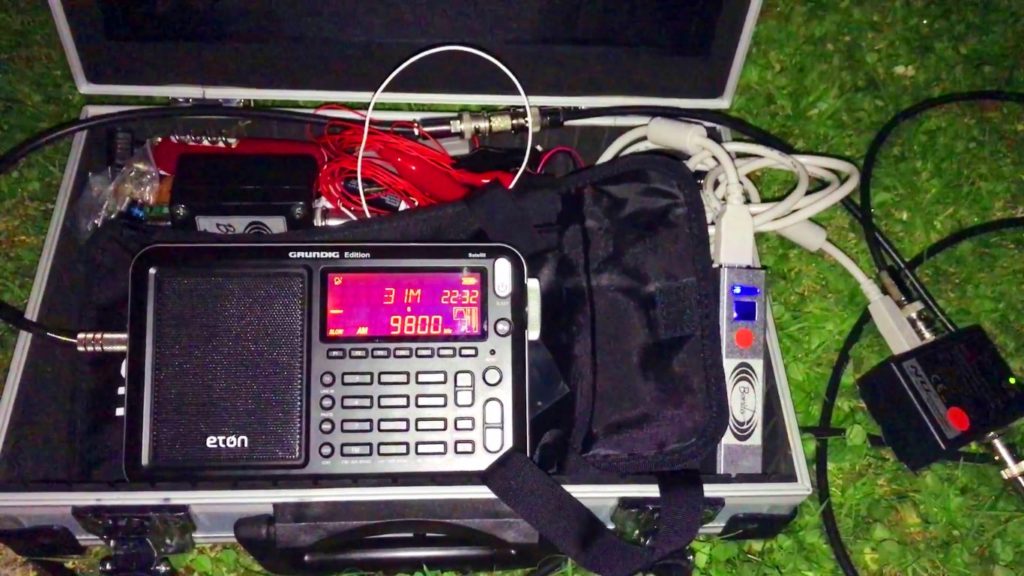 Have DXing kit, will travel…everything you need in a small flight case…
Have DXing kit, will travel…everything you need in a small flight case…
You might remember my initial tests at home confirmed, as expected, that E-field antennas don’t work well in electrically noisy environments (except at LW frequencies in my experience) but outdoors, away from noise, they are superb. I have a number of reception videos on my YouTube channel – Oxford Shortwave Log which clearly demonstrate identical performance of the Bonito MegActive MA305 antenna and Wellbrook ALA1530 magnetic loop out in the woods. So, what if you’ve got a large garden in a suburban area that allows you to be just far enough from sources of electrical noise…how much of a difference does it make to the noise floor of your receiving equipment? Can E-field antennas such at the Bonito MegActive MA305 do the job? Furthermore, how well does a random wire work in a larger garden?
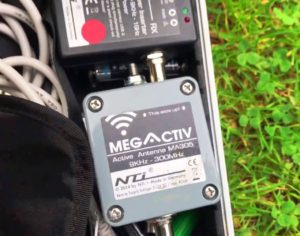
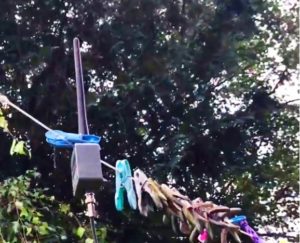 My MegActive MA305 antenna system for mobile DXing…and another use for a washing line…
My MegActive MA305 antenna system for mobile DXing…and another use for a washing line…
I was fortunate enough to know someone who owns a house with a large garden, quite close to my QTH (a 10 minute walk) and who was more than willing to let me set up my DXing equipment and sit around until the early hours of the morning, listening to and recording various signals on my Eton Satellit. In preparation, I set up the Bonito MegActive MA305 antenna and hung the radiating element on the washing line – sounds ridiculous but actually worked very well, placing it about 2.5 metres above the ground. I also set up a 40 metre longwire, which at its closest point, was still approximately 25 metres from the house, and 30 metres from the neighbours. This post will focus on the performance of the MA305; a subsequent post will detail the performance of the longwire.
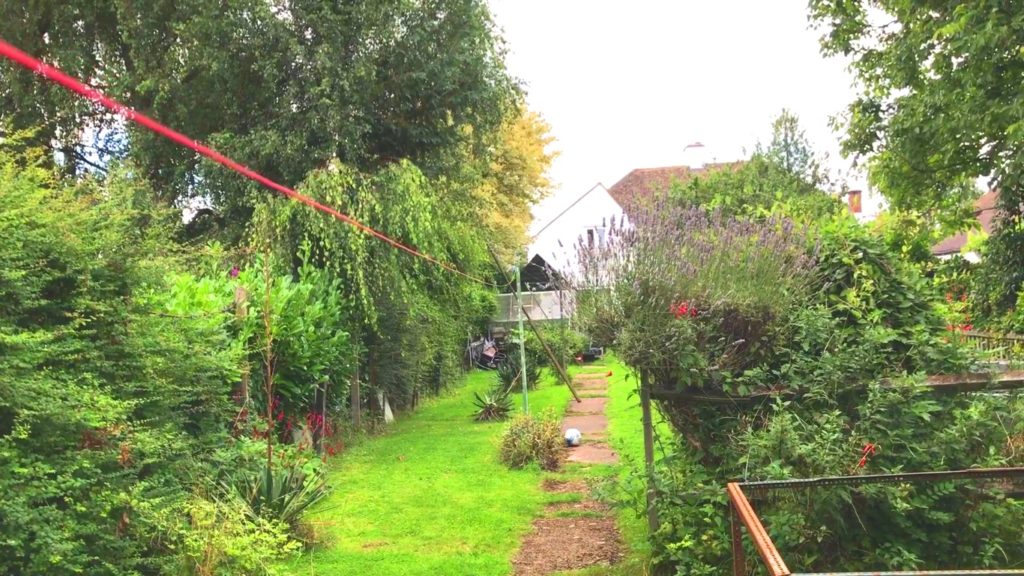 The large garden I ‘borrowed’ for my DXing session with the Bonito MegActive MA305 antenna
The large garden I ‘borrowed’ for my DXing session with the Bonito MegActive MA305 antenna
Suffice to say, the MegActive MA305 performed admirably during my first listening session. In the middle of the afternoon I copied a very strong signal from The Voice of Korea around 15:44 hrs UTC on the 25 metre broadcast band, followed at 17:10 hrs UTC with a superb signal from The Voice of the Broad Masses 2, Eritrea, on the 40 metre ham band. Later on in the evening I copied Radio Mail with excellent modulation, CHU Canada with voice announcements (almost impossible at home), Myanmar Radio with an untypically strong signal and XEPPM Radio Educación from Mexico City with a signal I would normally expect on a DXpedition-proper with a large antenna.
My conclusions to this experiment are simply that E-field antennas can work in a suburban environment, if you are able to site them far enough away from adjacent sources of electrical noise. I don’t have empirical data on this, however, I can confirm that 10 metres proximity is too close at my QTH and 30 metres is sufficiently far away at this test location. One has to assume the houses nearby are similarly equipped to mine with electrical appliances that generate electrical noise. Thus, if you’re interested in a very well-priced, compact antenna and you live in an urban or suburban environment with access to a large garden/ outdoor space, an E-field Boni Whip or MegActive MA305 might well be suitable – and you’ll have a superb portable antenna for those listening sessions away from home!
Finally, I should mention the Eton Satellit. Much-maligned in certain quarters when it was first introduced into the market, it continues to demonstrate superb DXing credentials. I won’t forget some words of wisdom from a friend of mine and fellow DXer, with more than 3 decades of experience in listening to the bands on HF. He told me that Judging from his own experience with some of the original Grundig Satellit models of the 1980s and early 90s (namely the 400, 500 and 700) he was quite sure that the Eton Satellit is a considerably better DX performer than those vintage sets, that offered great sound for casual listening to international broadcasters, but didn’t perform too convincingly on weak DX signals. The Eton Satellit has been a revelation and I’m pleased to have played a small part in turning around the rather widely held view that it was less than worthy of the Satellit branding.
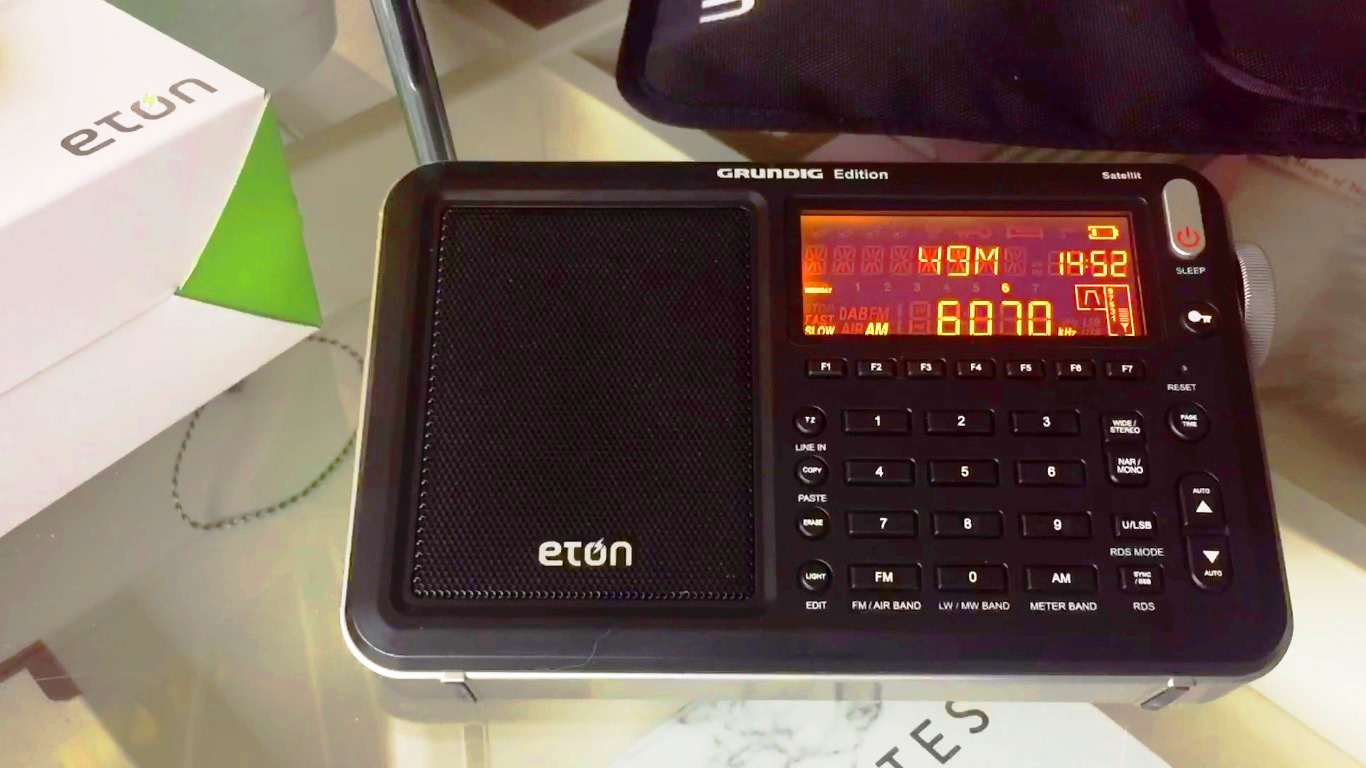 Fresh out of the box, the Eton Satellit has surpassed all my expectations…
Fresh out of the box, the Eton Satellit has surpassed all my expectations…
Please find embedded reception videos below and text links to the Oxford Shortwave Log YouTube channel. My next post on this subject will cover the performance of a 40 metre longwire in this large garden environment. Thank you for reading/watching/listening and I wish you all great DX!
Click here for video on Oxford Shortwave Log
Click here for video on Oxford Shortwave Log
Click here for video on Oxford Shortwave Log
Click here for video on Oxford Shortwave Log
Click here for video on Oxford Shortwave Log
Click here for video on Oxford Shortwave Log
Click here for video on Oxford Shortwave Log
Clint Gouveia is the author of this post and a regular contributor to the SWLing Post. Clint actively publishes videos of his shortwave radio excursions on his YouTube channel: Oxford Shortwave Log. Clint is based in Oxfordshire, England.

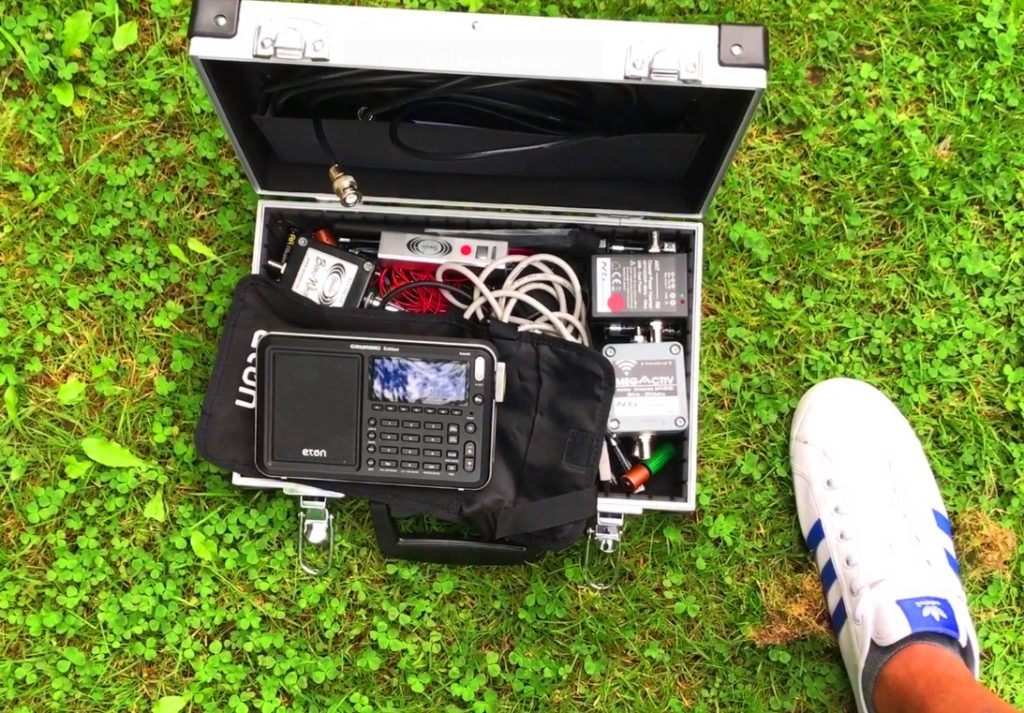
Hi there Thomas, thank you very much! There’s no doubt the Eton Satellit is punching above it’s ‘size’ with regard to audio fidelity and of course, it’s been demonstrated to be super-sensitive and capable of handling large antennas. I can only assume quality control issues were the cause of poor reviews early on.
Interesting that you mention WiFi controlled SDR because I am considering that. My friends are simply amazed that it’s possible to hear signals directly from North Korea for example, on SW and North/South American stations on MW! I did nearly ‘clothesline’ one of them in the early hours of the morning – well it was dark lol and accidents do happen!
Thanks again.
Best,
Clint
Excellent post, Clint! It goes to show that antenna performance is subject to so many environmental conditions, you simply have to try and see what happens. It’s most impressive that even that much more separation from RFI makes such a difference. And now you have a place to work DX with little effort when hitting the field isn’t as convenient.
I think another reason the Satellit is such a great field-portable is the audio. It really does shine in this respect–when you combine it with good AGC and sensitivity, there’s synergy to be found.
My question is how long it will be before you set up a WiFi controlled SDR at your friend’s house? 🙂 Fantastic that you also have canine friends and access to such a lovely garden.
So, I’m curious: When you log some rare DX from this location, can you claim you “clotheslined” them? 🙂
Brilliant!
Thomas
Excellent article and videos, Clint. It’s interesting to see how someone with limited space for antennas at home can overcome noise and other factors to make listening a viable option again. Well done.
Thank you very much Rob! It’s almost an obsession lol. Best, Clint
Thanks for the excellent article on suburban DXing, Clint. I subscribe to your YouTube channel and enjoy your videos very much.
I am a Northern California suburban SWL buff and occasional SW broadcast and utility DXer. My suburban lot measures 60 x 100 feet. This is a common lot size for homes built in my town during the late 1970’s. Radio interference sources in my house are well-hushed during my radio listening hours but I must contend with RFI from neighbors on the east and west sides of my lot. Actually, the west neighbor is pretty quiet but the east side neighbor spews a prodigious amount of radio interference from what I suspect is an impressive home entertainment system. Any antenna on the eastern third of my property will receive and/or radiate this RFI.
Your Oxford Shortwave DXpeditions into the “woods” inspired me to seek a suitable outdoor DXing location. This summer I searched the farmlands within a ten minute drive of my home. Alas, all of the potential sites discovered so far would have involved trespassing on private property. These farms are not operated by a friendly resident “Farmer John” and are patrolled by county sheriffs and private security. On one site I stumbled upon what must have been a local dating hangout. I got creeped out and left. At another location some farm workers were arriving nearby while I set up my Sangean ATS-909X and a 200 foot random wire. They saw me and scurried back to their cars and drove away. They must have thought I was working for ICE.
This leaves me with my radios (including a very effective Hammarlund SP-600) and antennas at home. Reception is good enough to maintain my interest in the hobby but of course, I want more. I have a couple of end-fed random wire/long wire antennas. My favorite antenna at the moment is a 274 foot (83m) horizontal loop. The loop provides better signal-to-noise performance than the end-fed wires. However, tropical band DXing remains elusive due to the neighbor’s RFI. I may consider spending several hundred dollars for a small active antenna sometime in the future. Here are some YouTube videos of two recent DX catches with the 909X and the horizontal loop. 73!
BBC World Service, Kranji relay
https://youtu.be/MKWfFj63GUw
RTM Sarawak
https://youtu.be/C-67eD8mImc
Hi there Dan, I guess if you live anywhere in an urban or suburban environment, there’s going to be issues with local QRM which is going to work to reduce your SNR, whatever equipment you’re using. Given that, your catches of the BBC relay at Kranji and in particular RTM Sarawak are impressive – and I always get a lot of pleasure from seeing a 909x engaged in real DX! I guess if finding an external location is not feasible, then your best option at home is a magnetic loop. Thanks very much for your support of the Oxford Shortwave Log channel; it makes the effort worthwhile knowing others are enjoying the reception videos. Best, Clint
Thanks, Clint. Yes indeed, Oxford Shortwave Log rocks and I have learned a lot from it. If I have learned anything about suburban SWL DXing it’s that 25% is the receiver, 25% is avoiding RFI and 50% is the external antenna. I will continue looking into magnetic loops.